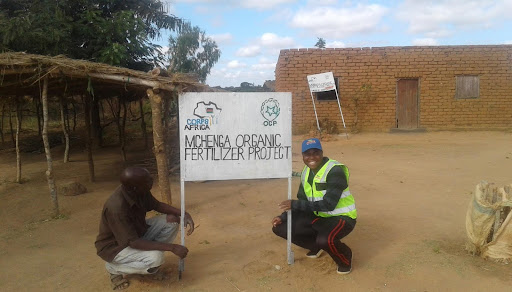
The community knew that they were facing a problem with their crop output. The community had ample farming land, yet their agricultural yield was low, barely keeping up with demand. The farmers also noted that their crops did not provide enough economic benefit for them to meet their basic needs. After looking into their agricultural problems, Mphatso was able to identify that, collectively, the farmers in the community were unable to afford fertilizers that would provide crops with much-needed nutrients and protection for growth. To overcome this challenge a plan that would make fertilizer accessible was needed. While making arrangements, the community identified a second challenge to increasing their crop output, which was a history of inefficient irrigation. They identified that fertile swamp land had gone uncultivated because of the laborious irrigation techniques that would have been needed to maintain it. To achieve the community’s major goal of increasing crop yield, a new irrigation system needed to be installed and a reliable and sustainable source of fertilizer had to be established.
Phase one of this project involved gathering the necessary materials for building the irrigation system and establishing composting sites. To establish composting sites that would serve as an organic long-term source of fertilizer, the community dug composting pits and filled them in with natural materials including manure, grass, and byproducts of farming (corn and soy stalks, etc.) The farmers were also equipped with an education on how to make organic fertilizer from compost, manure, water, and chemicals. They were taught how to use this fertilizer efficiently, testing various blends of fertilizer they had made, and applying the most effective blend to their fields when the timing was correct. Phase two of the project involved mobilizing resources and building the irrigation system for the swamp land. A solar water pump was installed and the farmers were trained on its proper use and maintenance. The final phase of the project focused on boosting economic opportunity for the farmers beyond their ability to sell produce. In phase 3 the farmers made organic fertilizer and packaged it so it would be accessible for sale to the larger community. By selling this product, the community can grow stronger crops that, in turn, offer more people a more nutritious diet. Both large and small-scale farmers in the village have the opportunity to produce more food because of the benefit that an affordable and efficient source of fertilizer offers. They are also able to use water more efficiently, even beyond the former swamp land, to sustain their crops and aid their compost in decomposing. The farmers involved with this project belong to a club and have pledged to continue their fertilizer enterprise as well as maintain the irrigation system that they implemented.